The 5 Best Natural Remedies for Beginners
Are you eager to start making the switch over to natural remedies, but unsure of where to start?
I know that when you’re first getting started with the world of herbs, essential oils, alternative medicines and so on, it can feel daunting. Walking into a health food or vitamin store is an exercise in overwhelm. And googling what you’re trying to find out can be even worse!
Growing up, we took Tylenol for headaches, Nyquil for colds, Neosporin for cuts, and Pepto Bismal for stomach-related issues (that’s a nice way of saying it, isn’t it?). Our medicine cabinet had it all.
The unfortunate truth is that while these “remedies” may mask symptoms enough to make us feel temporarily better, they don’t actually contribute to bringing our body back to a place of healing and wholeness. In fact, over the long term, small doses of common pharmaceuticals can actually harm our body (for example, Tylenol can cause liver damage).
I think the best course of action when you’re just starting to make the transition from pharmaceuticals to natural remedies is to pick a few simple ones with a variety of uses, and get comfortable with them, before moving on to more.
To help you do just that, I’ve put together a list of the 5 natural remedies that I would most highly recommend to a beginner.
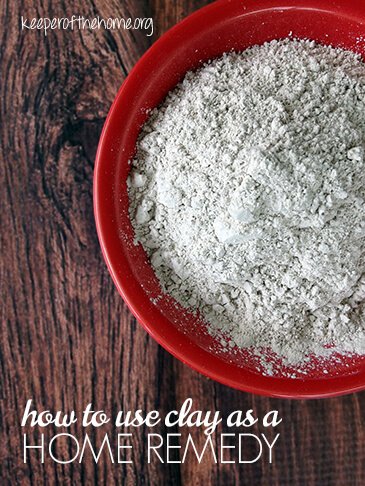
1. Clay
More specifically, bentonite clay. This might sound like a bizarre first remedy (she’s recommending dirt??), but stick with me a moment, OK?
Let’s go back to that well-known pink stuff… Pepto Bismal. Any guess what’s in it? That’s right. Clay (but unfortunately, also all sorts of other ingredients your body doesn’t need).
The reason it works is that clay is able to attract toxins to itself, and draw them out of the body. It can absorb nasty stuff in our digestive systems and clear it out the other end. It can remove toxins, impurities and infections from skin. It can also be very soothing.
For all of these reasons, we use both powdered clay and liquified clay in our family for:
- insects stings and bug bites
- stomach upsets (diarhea, digestive troubles, general tummy yuckiness)
- to soothe cuts and scrapes and aid healing process
- draw out an infection in the skin
- detoxifying (we use it most specifically for baths)
Read more in detail about how clay works, and how we use it in this post.
While I’m on the topic, I want to give activated charcoal a big thumbs up.
For one thing, it’s more readily available than clay (you can buy activated charcoal HERE) For another, it works equally well as clay when taken internally for stomach distress (and I’d venture to say it works even better), as well as for healing infections and addressing stings or bites. I’m a huge fan and you can read about how I used it to treat a skin infection here.
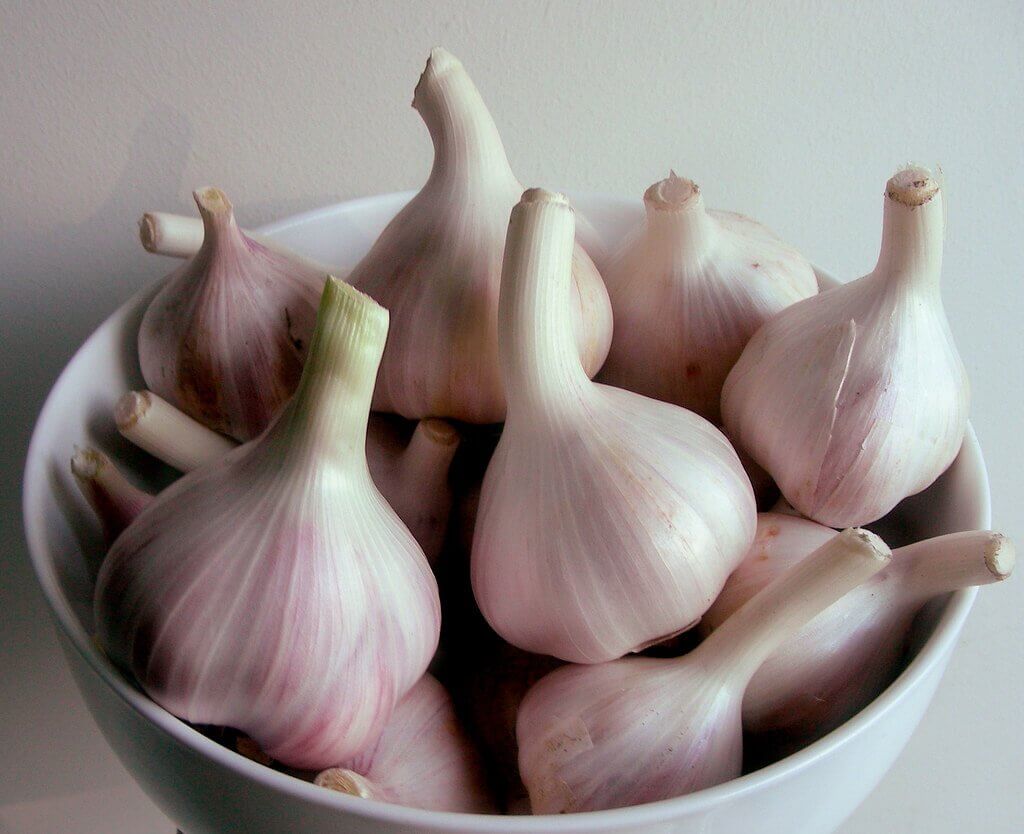
2. Garlic
Not just any old garlic, but even more specifically, raw garlic.
And here’s the beautiful thing about garlic… you can buy it at any grocery store. It keeps for a long time in a cool, dark place or in your fridge. There’s no reason not to have it on hand for when sickness strikes.
I’ve actually written a very lengthy piece on how garlic works and its benefits, but allow me to condense it for you. When raw garlic is crushed or minced, compounds within it are activated which have a very strong anti-biotic effect. It also has anti-fungal, anti-viral, and anti-inflammatory properties.
In a nutshell, there are two many things you need to remember about using garlic effectively:
- It really needs to be raw to be truly potent, and is more active once minced or crushed in some way.
- You can’t take it once a day like an antibiotic pill and hope for the same result. It’s not a pharmaceutical. To get great results with many natural remedies, you want to take them steadily over the course of the day, every few hours. If you take it this way, you’ll be amazed at the results!
Garlic can be used for so many things, but here are just a few to try:
- treat ear infections (this works best by infusing it into an oil- see this post)
- ward off a cold, flu or infection more quickly
- thrush/Candida/yeast/fungal infections
Not sure you can get it down? Maybe try one of these 7 ways to eat it? My kids will take a clove minced up if it’s covered in raw honey. My husband and I like it best on top of a piece of toast with cheese on top.
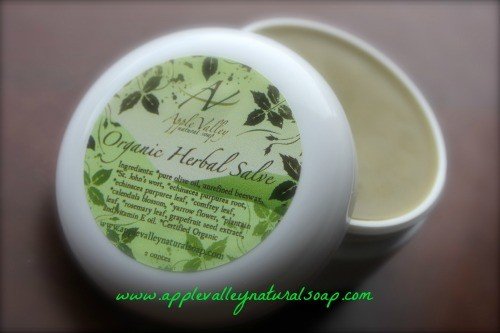
3. Herbal salve
This is my wonder cream. My kids all know exactly what I mean when they have an owie of some sort and I tell them to go “put cream on it”. It’s also one of the very easiest natural remedies that anyone can start with.
Really, it’s not cream at all, but an herb-infused blend of oils that are solidified into a salve which you can rub on, like an ointment. It’s similar to using something like a Neosporin or antibiotic ointment from a tube at the pharmacy, except that it’s all natural and beyond just preventing infection, it really encourages healing.
There are many salves out there and you can even make one yourself if you prefer. I’m all for DIY but I’m usually just as happy to buy mine. I love this one, though there are many out on the market that are probably effective as well.
We use herbal salve for:
- diaper rash
- chapped lips
- cuts and scrapes
- minor infections
- rashes
4. Essential oils
I’ve grown to love using essential oils more and more over the years. They’re so quick and easy to reach for, and when used properly, can be very effective. The more basic ones are also very affordable and last a long time, making them a good choice for someone just getting started.
There’s a fair bit of controversy out there over whether you should or shouldn’t ingest oils, and I would agree, it’s a murky subject which I won’t into for now.
What I will say is that there are a number of uses that I would recommend to anyone, with just a few of the more inexpensive oils out there.
Peppermint – Great for sore muscles and for headaches (particularly tension headaches). Also for nausea (smelling it helps a lot for this use, as can rubbing it on temples or behind ears). It’s a bit strong, so usually best to mix it with a carrier oil (coconut or olive oil work great) before rubbing onto the skin, since it irritates some people and don’t let it come in contact with eyes (ask me how I know).
Eucalyptus – You can make your own version of Vapo Rub with this oil and it really, truly works. Or, you can be simple like me and just pour a little olive oil into the palm of your hand, add a few drops of eucalyptus, and bada bing, bada boom. You’ve got “vapo rub”. Rubbing it on the chest and back works, but also, try the bottoms of bare feet, and then put socks on overnight.
Lavender – I have used this oil many times in its neat form (undiluted) when I’ve burned myself. Just rub a drop or two straight onto the burn (you wouldn’t do this with a really serious burn – it’s more for your average kitchen burn). It usually helps to relive the pain within about 5 minutes, and sometimes I re-apply it 10-15 minutes later if needed. It’s also very helpful for calming and relaxing, whether used with a carrier oil and rubbed gently on the skin, or by smelling it (a diffuser is great for this purpose).
This is an excellent overview of 8 essential oils to use for home and health and what to do with them.
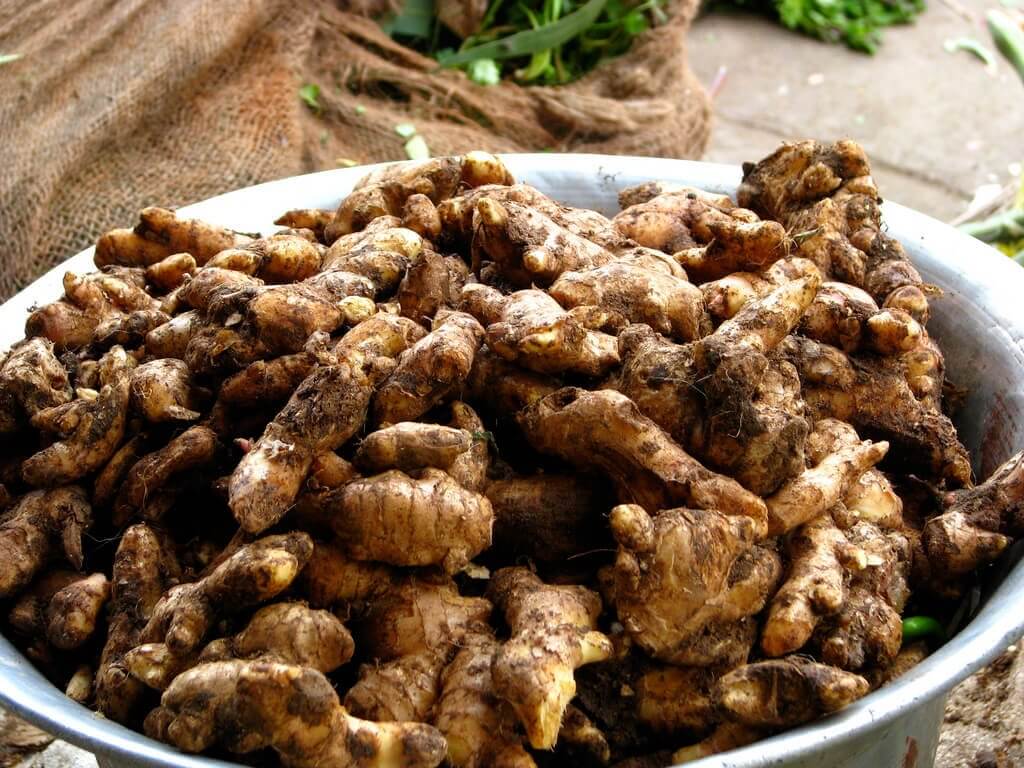
5. Ginger
There were so many other remedies I could have chosen for this last one (probiotics, raw honey, colloidal silver and epsom salts were all on my short list), but ginger is one of the first herbs that I really noticed tangible results with, so I want to pass it on to all the beginners out there.
First of all, it’s very accessible. You can buy fresh ginger root at most grocery stores, and certainly ginger powder in the spice section if nothing else. Secondly, ginger is absolutely wonderful for the digestive system.
I would highly recommend using either:
1. Fresh, peeled ginger (in slices or chunks) OR
2. Ginger tea (either chopping up fresh ginger and making tea with that, or using the dried power with hot water)
Both work amazingly for nausea, morning sickness, heartburn, gas, upset stomach, etc. I regularly drink ginger tea or nibble on fresh ginger while pregnant, especially in first trimester or when I have heartburn later on in pregnancy.
I’ve also found ginger to be very effective in a more uncommon use — the bath! Particularly great for chills, flus and fevers… run a hot bath and dump in 1/2 cup to 1 cup of ginger powder (beware that more will be stronger!) and less for children (maybe 1/4 cup maximum). Sit and soak in the hot ginger water.
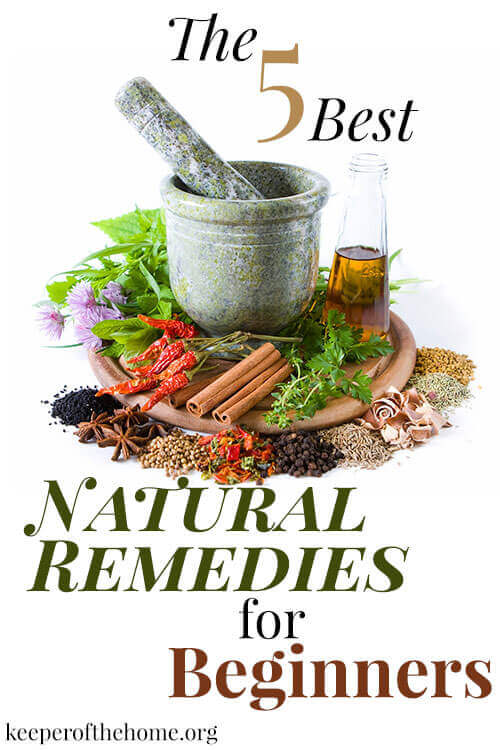
It will increase circulation and probably make you feel a bit flushed. Make sure to drink lots of water and only stay in as long as you can (with a child, watch them very carefully if they’re looking flushed and don’t keep them in too long). Then, get out, drink some more water, and wrap yourself up in bed. This circulation boost really helps with reducing the chills and aches of a fever and in my experience, shortens its duration.
I’ve written extensively about ginger before, it’s an ingredient in our tried-and-true cold kicker remedy, and you can try this soothing lemon ginger drink for colds and congestion.
Which natural remedies have you found useful and effective?
Disclosure: This post contains affiliate links.





